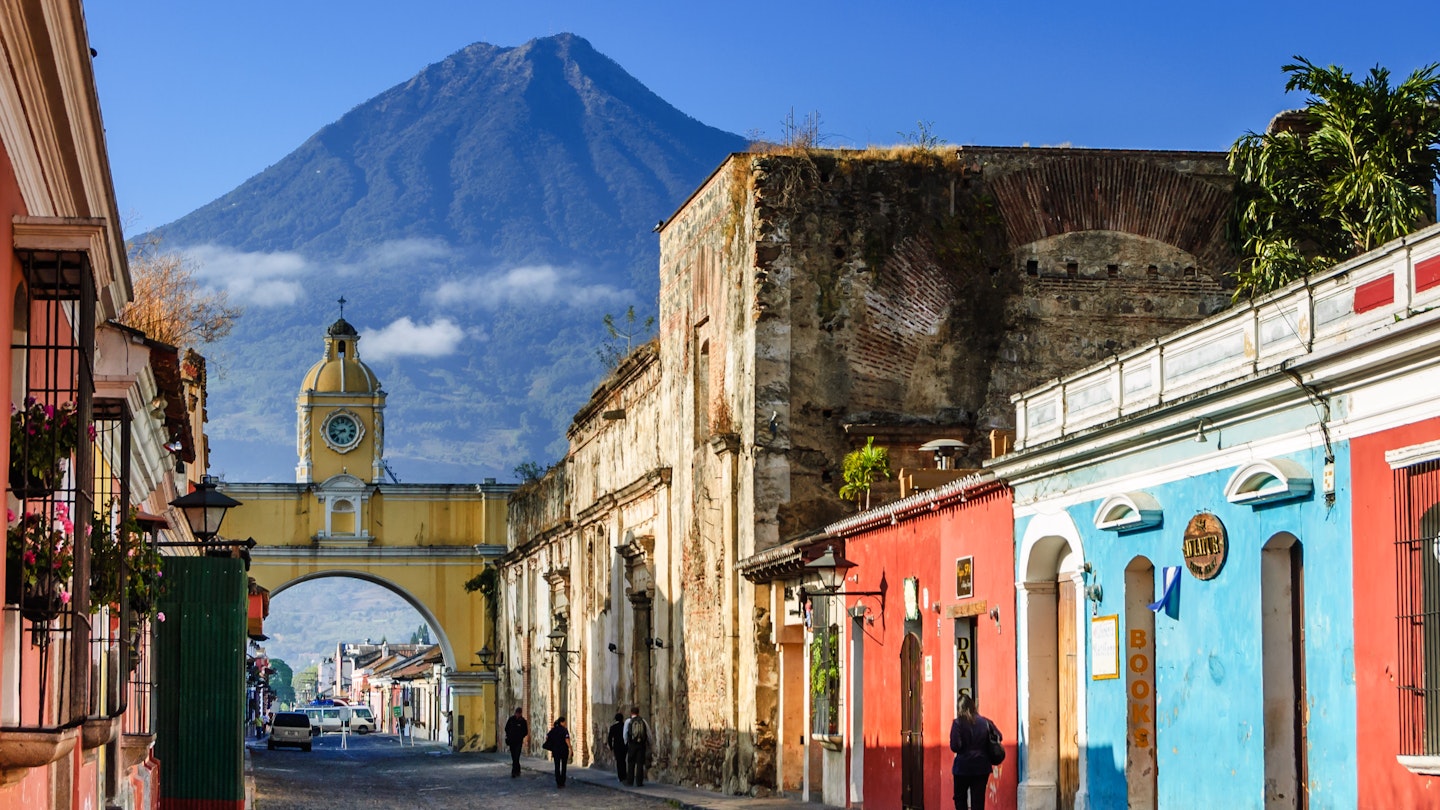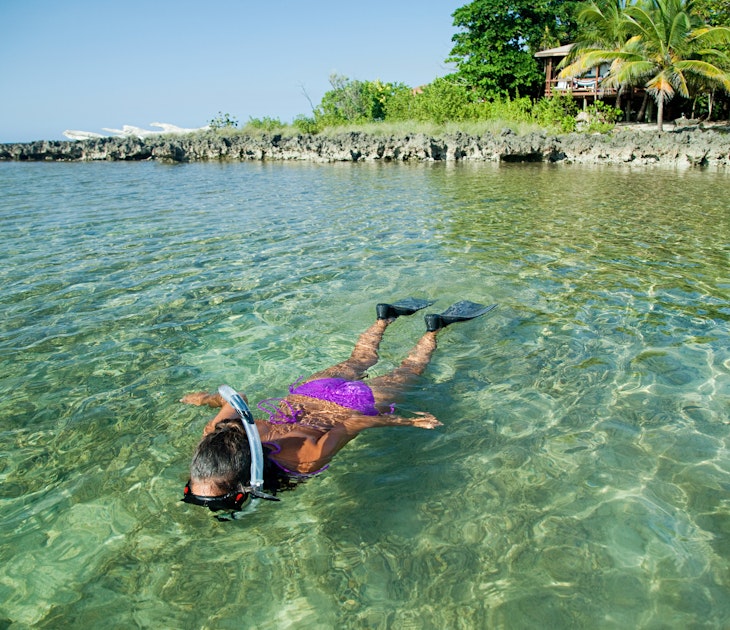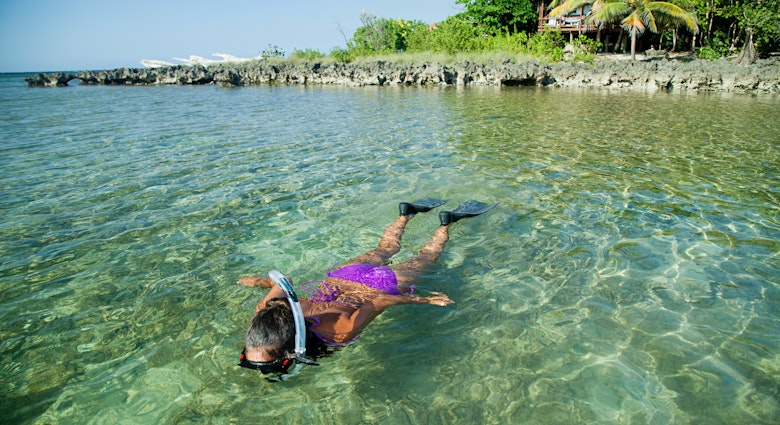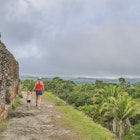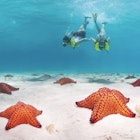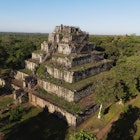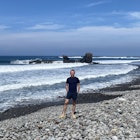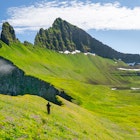The epicenter of Mayan culture in Central America, Guatemala is renowned for its dramatic volcanoes, black-sand beaches, biodiverse jungles, thriving Mayan townships and the stunning ruins of Tikal.
There's loads to see here. The country’s abundant natural attractions are topped off by the urban charm of Antigua, the country's former Spanish-era capital, where visitors can find some of the best food in Central America.
Everything in Guatemala feels vibrantly alive, from the Mayan culture of Chichicastenango to the serene waters of Lake Atitlán with its guardian ring of volcanoes. One trip will likely have you hooked for life, so here are the best places to visit to start the adventure in Guatemala, the Land of Eternal Spring.
1. Antigua
Best for architecture, history and volcanoes
Just a 45-minute drive from Guatemala's main international airport, Antigua is most travelers’ first and last stop in Guatemala, and it rarely disappoints. This city’s cobblestone streets and colorful homes are surrounded by towering volcanoes, the most impressive of which is El Fuego ("the fire"), whose steep slopes are regularly marked by low-level eruptions.
Antigua is a place to pose for selfies under the iconic Arco de Santa Catarina, shop for Mayan handicrafts, take stunning photos of volcano-backed street scenes and colonial architecture, study for Spanish language courses, and refuel in the city’s many excellent cafes, restaurants and bars.
Some of Guatemala’s best restaurants can be found in Antigua, with excellent global cuisine as well as traditional and contemporary Guatemalan fare. Eat delicious, budget-friendly street food at the night market or splurge on somewhere elegant and atmospheric. Bring an appetite to Meson Panza Verde, a cozy boutique hotel where creative fusion dishes are made with local ingredients.
For days out of town, wake up early to hike to the nearby Pacaya and Acatenango volcanoes, or wake up late and enjoy a locally grown brunch at Caoba Farms. There's plenty here to fill many days of exploring.

2. Lago de Atitlán
Best for chilling out amidst volcanic scenery
Tucked away deep in the western highlands and framed by three towering volcanoes, Lago de Atitlán is considered by some to be the most spectacular lake in the world. The waters of this deep and mysterious crater lake turn turquoise to deep green to dark blue as the light changes with the time of day and season. Because of its unique beauty, travelers have been known to get stuck here for weeks, months or even years.
Small villages with distinctively different moods surround the lake. Party people should head to San Pedro La Laguna, while those interested in meditation and yoga will love quieter San Marcos La Laguna. Spanish classes are widely available, but the main order of the day is simply chilling by the lakeside and marveling at the wonders of Mother Nature. More energetic activities for those who simply can’t sit still include paragliding, paddle boarding and hiking Volcán San Pedro.
3. Chichicastenango
Best for living Mayan culture
Chichicastenango, aka "Chichi," not only hosts the most impressive Maya market in the country, but it also has deep historical significance. The town served as the main trading center for the Quiché region before the conquistadors arrived, and the tradition of people coming from hill villages to trade continues to this day.
Nestled amidst lush green mountains in the Guatemalan highlands, this sprawling market town fills with traders every Sunday and Thursday, when visitors surge in on day trips from Lago de Atitlán. You'll find a labyrinth of stalls full of local products, carved masks and gorgeous textiles, including the traditional huipil blouses that Indigenous women weave and wear. Every region has a different style of huipil, and the intricate patterns of natural designs and abstract symbols can take anywhere from three months to a year to weave.
Other goods sold in this atmospheric market include wood carvings, leather goods, pottery and jade, silver and gold jewelry. While you're in Chichicastenango, drop into the small archeological museum, the museum of ceremonial Mayan masks and spend some time people-watching on the incense-cloaked steps of Iglesia de Santo Tomás.

4. Río Dulce and Livingston
Best for river adventures
The largest lake in Guatemala, Lago Izabal is known for its geothermally heated waterfalls and fringing mangroves teeming with wildlife. The lake empties into the Río Dulce, which runs directly to the town of Lívingston, a busy hub for Garifuna people located on the Caribbean coast. Many travelers stop here en route to the coast and hire a boat to take them down the river.
Río Dulce is hot, humid and lush, and the vibe is surprisingly international, thanks to a string of marinas, restaurants and bars along the river that cater to visiting sailors. Stay at the excellent Tortugal, a boutique guesthouse located on a marina, and let the water lull you to sleep, or take a pickup to stay at one of the more remote, riverside jungle hostels – Hotelito Perdido is a top choice.
5. El Petén and Tikal
Best for Mayan ruins in the rainforest
The Guatemalan department (province) of El Petén is one of the most biodiverse regions in Central America, and this is also where the towering Mayan temples of Tikal are found. The ruins of this ancient city, which rose to the height of its power in the 7th century, are buried deep in the jungle, visited regularly by howler monkeys, coatis, agoutis and tropical birds and cloaked in lush vegetation. It’s worth spending a few days here exploring the region around beautiful, deep-green Lago Petén Itzá.
Several small communities line the water’s edge. The island town of Flores is where most people stay while visiting Tikal, with a good selection of hostels and hotels, fun-filled nightlife and amenities. However, the often-overlooked village of El Remate is another excellent option for those looking for a more tranquil vibe.
El Remate is tiny, but it has a handful of hostels, and it’s on a much better stretch of the lakeshore for swimming. As an added bonus, the village is located closer to Tikal, meaning a quicker journey to the ruins. Check out the long-established Mon Ami hostel and restaurant for lakeside accommodations and lake-fish lunches, and Las Orquideas for delicious Italian food.
Lesser known than Tikal, but equally worthy of a visit, are the ruins of Yahxa, a smaller ceremonial site located between two lakes, which is famed for its epic sunsets. For the more adventurous, five-day jungle treks to El Mirador, the largest Mayan site in Central America, can be arranged through local outfitter Carmelita Tours.
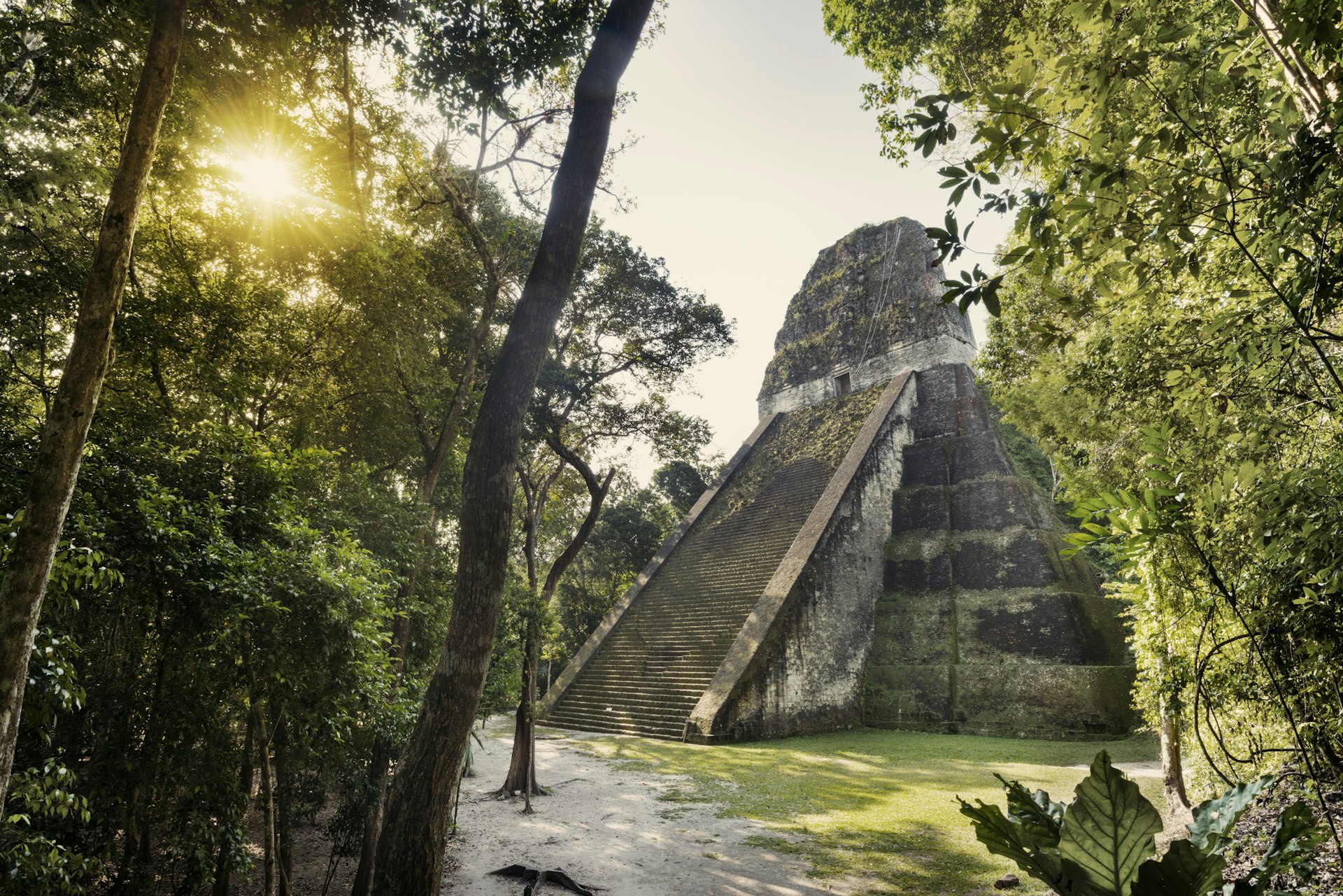
6. Nebaj and the Ixil Triangle
Best for uncrowded hiking trails
The isolated township of Nebaj is located in the remote highlands of the Cuchumatanes Mountains, a region referred to as the Ixil Triangle. It's an excellent hub for hiking off the tourist trail. Visitors can trek through the tallest mountain chain in Central America, traversing verdant peaks and valleys that alternate between subtropical forests and sweeping shrublands.
It’s possible to hike from the Ixil triangle to Todos Santos, a small town famous for its Day of the Dead celebrations every November. Starting from Nebaj, hikes are run twice a month by the excellent Quetzaltrekkers, based out of Quetzaltenango.
7. Semuc Champey and Lanquín
Best for splashing in jungle pools
With its serene turquoise pools and natural limestone bridge, the national park of Semuc Champey is one of the most beautiful places in Central America. It’s a bit of a challenge to get there, but the trip is well worth the effort to swim and relax while surrounded by tranquil natural beauty.
The pools are pretty remote, and many visitors choose to stay in Lanquín, a village about a 45-minute drive from Semuc Champey, where there are amenities and a handful of excellent hostels. Check out Zephyr Lodge, a popular party hostel with an infinity pool and unrivaled views of the surrounding mountains.
El Retiro Lodge is more relaxed and just as pretty, with simple huts located right beside the river. Day trips to the pools are arranged by both hostels. Alternatively, if you're looking to stay as close to the pools as possible, Greengo’s Hotel has A-frame cabins just a 10-minute walk from the entrance to the park.
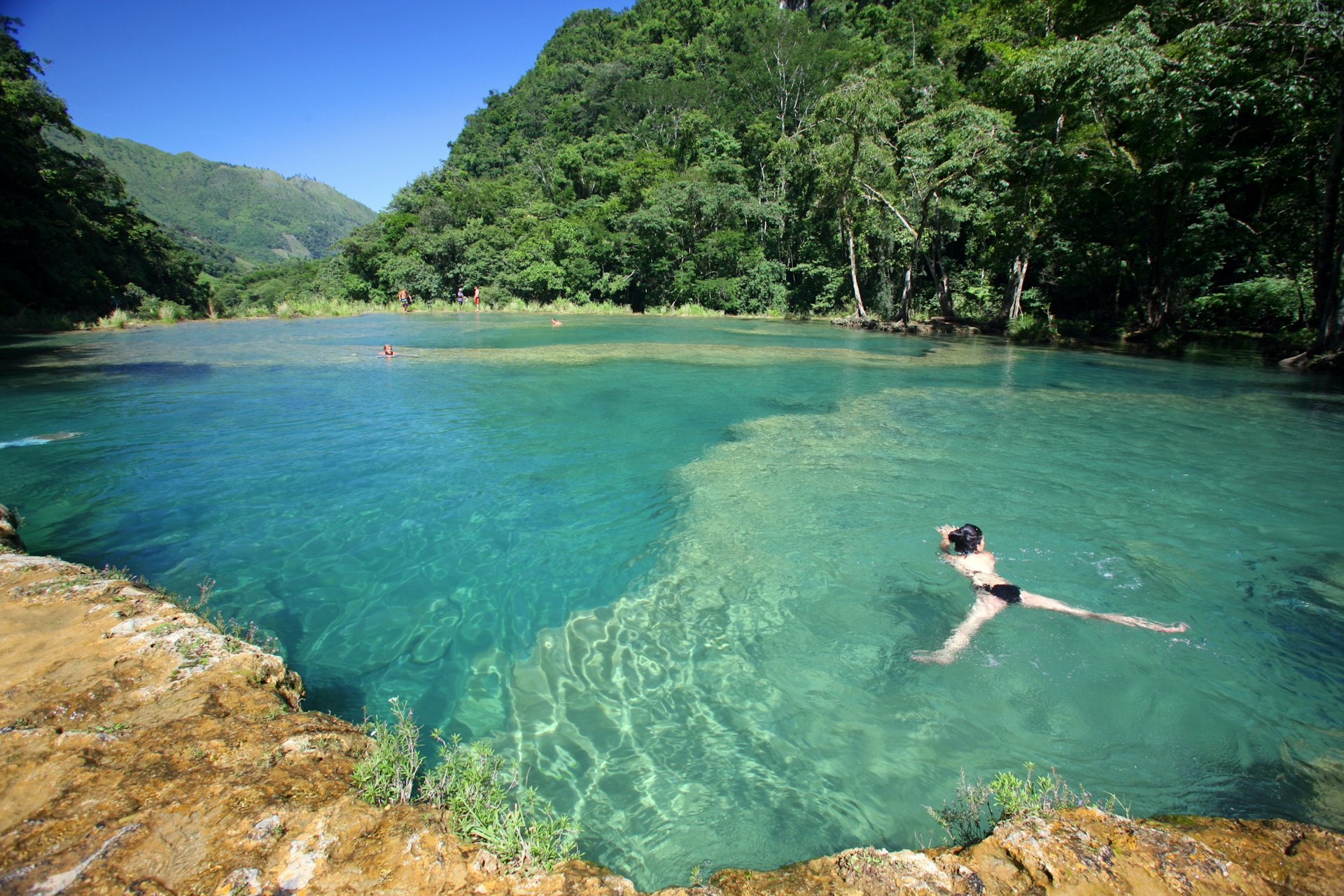
8. Laguna Lachuá
Best for escaping the tourist trail
Located in the middle of Parque Nacional Laguna Lachuá, in the coffee- and cardamom-growing region of Alta Verapaz, this idyllic lagoon is quickly gaining traction as one of the country’s best off-the-beaten-track destinations. Reached by a humid 5km (3-mile) hike, this perfectly round, turquoise lake is flanked by interpretive trails, and it's a lovely place to swim.
Visitors can only get to the lagoon after hiking through dense areas of tropical rainforest, home to howler monkeys, tarantulas, colorful birds and flowers. After working up a sweat on the way here, the deep, cool lagoon is the perfect place to dive in, cool off and relax. The park doesn’t have any restaurants, so you'll need to bring your own water and food.
9. Monterrico and El Paredon
Best for black sands and surfing
Monterrico is a popular beachside getaway for Guatemalans, and it offers a fine expanse of black sand where you can relax, swim and watch the most incredible sunsets. By day, take a tour through the protected mangrove forest to see tropical birds and other wildlife or visit the Tortugario Monterrico nature reserve in the evening to help release baby turtles from September to January.
A two-hour drive away, El Paredon is the smaller of the two beaches, but it's becoming increasingly popular thanks to its decent surf breaks and the emergence of some great places to stay, including hippy-chic Swell. Head to this chilled-out beach for a backpacker vibe, easy-going Spanish classes, surfing lessons and socializing at the Driftwood Surfer hostel, which always has something going on every night of the week.
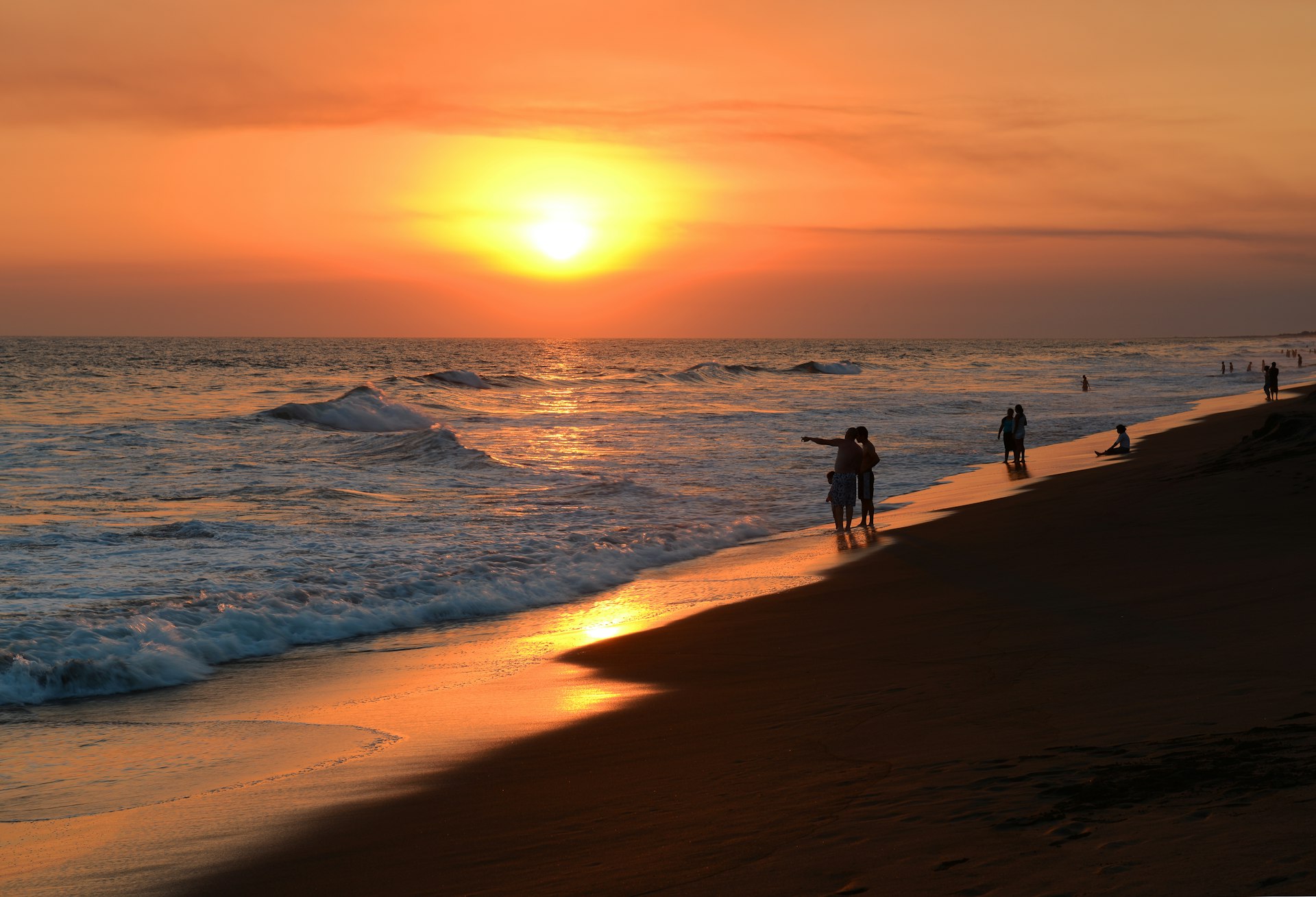
10. Quetzaltenango
Best for relaxing in the highlands
Quetzaltenango, or Xela (pronounced shay-la) as almost everyone calls it, is a place to linger. A big city with a small-town vibe, Quetzaltenango has pretty cobblestone streets, crumbling colonial buildings and a central park bookended by an ornate cathedral. Many visitors come here to study Spanish, volunteer, or take some serious hikes in the western highlands.
With the high elevation, expect pleasantly cool evenings that are perfect for sitting out in candle-lit bars and restaurants. Spanish students mingle with NGO volunteers, and chatty local residents are happy to help out with verb conjugations. Check out Mandarina on Calle 13-21 for the best lattes and salads in town. Don't leave without trying shecas, a local sweet bread stuffed with either beans, cheese or jam, typically consumed with afternoon coffee.
Sights worth visiting just outside the city include the hot springs tucked into the forest at Fuentes Georginas, Laguna Chicabal – a sacred lake that is often shrouded in mist, reached via a five-hour tramp up a volcano – and the twin volcanoes of Volcáns Santa Maria and Volcán Santiaguito, which can both be visited on a rewarding day hike.
11. Guatemala City
Best for neighborhood exploring
Guatemala City is Central America’s largest metropolis, and how you experience the city will depend on where you spend your time. For those looking for a soft place to land, Zone 10 is the upscale neighborhood of the city, with wide, tree-lined boulevards full of high-end restaurants, hotels and trendy shops. This is also where you'll find Museo Ixchel, an excellent museum focused on Mayan textiles and weaving.
For a more historic vibe, head to Zone 1, where you will find the Parque Central and the Palacio Nacional de la Cultura, once the home of dictator General Jorge Ubico. The park is popular for street food and occasional live music, or just as a place to sit for a while and watch the city going about its business.
Heading south from Zone 1 is Paseo de la Sexta, a pedestrian-only area studded with cafes, restaurants and shops. Here, you'll find the famous Hotel Pan American, popular with revolutionaries, artists and writers since its construction more than 70 years ago. Across the street from the hotel is the equally famous Portalito, the bar reputedly frequented by Che Guevera whenever he visited Guatemala.
Zone 4 has been transformed from a dicey neighborhood full of abandoned factories into a trendy area with a post-industrial vibe. This part of the city is perfect for digital nomads looking for a hip place to work, and the once dilapidated streets are now alive with colorful street art, art galleries, craft breweries and cafes serving up local beans that have until recently been reserved for export.
